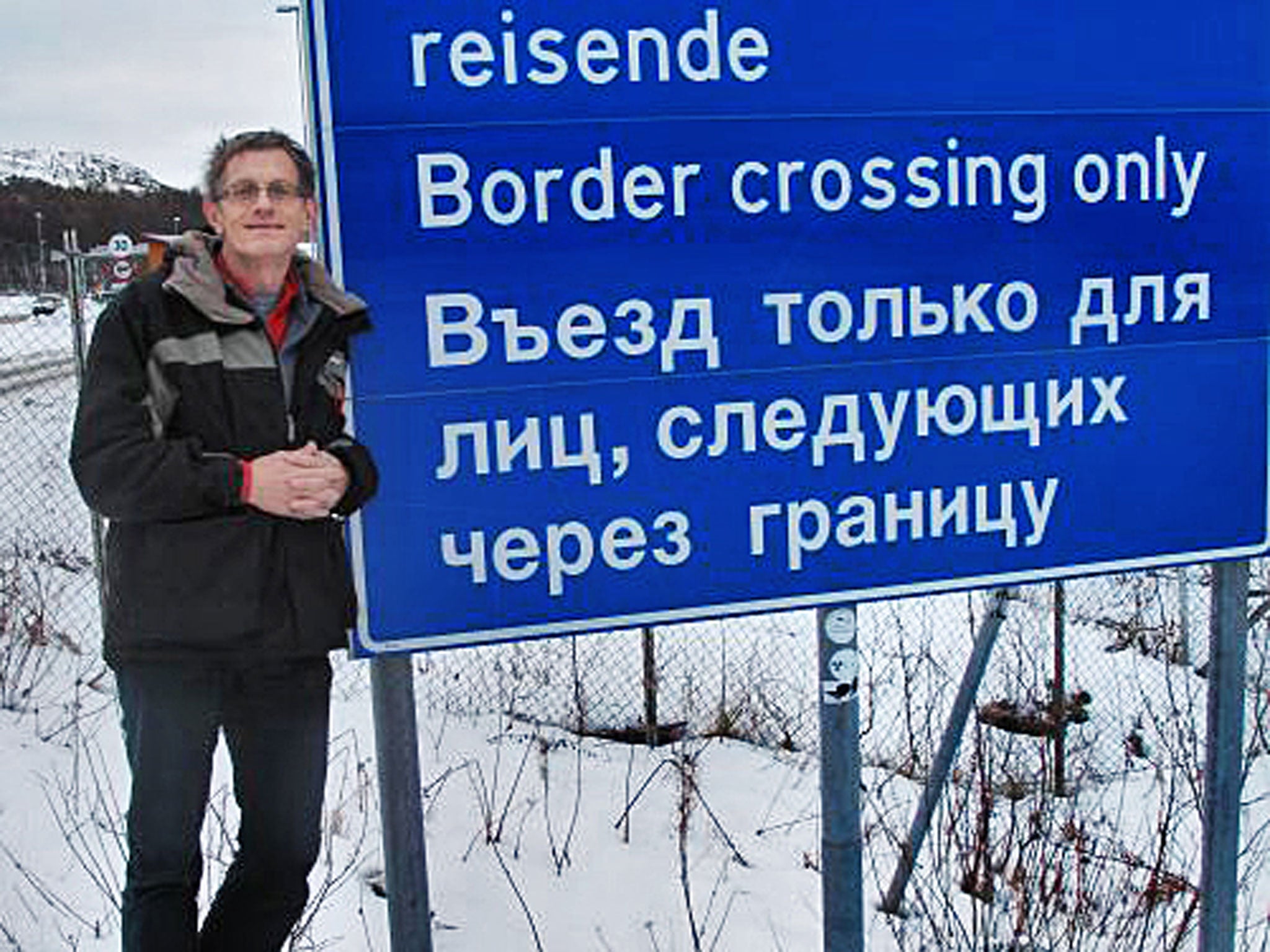Simon Calder: New frontiers in low-cost travel
The man who pays his way

Borders are good places to think about the future of travel, whether that means your immediate chances for the smooth and successful completion of formalities, or the longer-term prospects for globetrotters.
Last Saturday morning I happened to be at Russia's only frontier post with Norway. The lonely lakeside location is deep inside the Arctic Circle, a few miles from the shores of the Barents Sea and further east than Istanbul – another great crossing point between two worlds. The nearest city, going east, is Murmansk, just 80 miles away. Heading west, the signs point the way to Narvik, 675 miles down the road. And while this is still part of continental Europe, the Canadian city of Iqaluit is closer than the Spanish city of Malaga.
Tomorrow happens to be a notable milestone, when the no-frills revolution comes of age: 18 years ago, Stelios Haji-Ioannou tore up the conventional aviation rulebook by launching easyJet. On 10 November 1995, a flight from Luton to Glasgow started the low-cost revolution that has benefited travellers all across Europe, reaching as far as this desolate divide.
A 20-minute drive from the frontier takes you through the snowy wastes to Kirkenes airport. From here you can fly to Malaga, with a brief transfer in Oslo, in 7 hours, 15 minutes. SAS will whisk you from the far north to the deep south of Europe in time to visit the Picasso Museum before nibbling tapas beside the Mediterranean, all for a fare as low as £100.
Where next?
The journey to adulthood has been erratic and occasionally painful for passengers; four or five years ago, easyJet's reliability took a dive, destroying the travel plans of tens of thousands of passengers. But the airline picked itself up and dusted itself off, and is now delivering excellent service to travellers and excellent profits for shareholders. What with assigned seating and business-friendly schedules and fares, the airline increasingly looks like a lean and energetic version of British Airways – while BA has slimmed down to compete. Its arch-rival Ryanair has been throwing its toys out of the pram for most of those 18 years, but now has reformed to the point where practices some passengers found offensive have been replaced by a charm offensive.
If yesterday's no-frills rebels are the new establishment, where will the next low-cost revolution in travel occur? That is what I was contemplating on the long journey back from the Russian frontier.
The necessary conditions, which Stelios identified, are the combination of prevailing high fares and the freedom to innovate. So where will you find that? Across the North Atlantic.
You might now be thinking, "Hang on, a couple of weeks ago you wrote about Norwegian Air Shuttle starting low-cost flights from Gatwick to the US next July". Yes, but that's a very different proposition from what I have in mind. Norwegian proposes deploying a high-spec, high-cost aircraft – the Boeing 787 "Dreamliner" – that offers as much comfort as the existing competitors, British Airways and Virgin Atlantic. But there is still a gap in the market for cheap short-haul jets across the ocean, because if you pick the right starting point the ocean is not as wide as many think.
Indeed, a small rebellion against convention is already taking place, but the world has not sat up and taken notice. Icelandair has a very good business connecting Europe with Canada and the US, and is stepping up services in 2014 with new links to Edmonton and Vancouver. The only plane the airline has is the Boeing 757, an old, inexpensive model that BA used for domestic shuttle services until the jets were sold off to a parcels operator.
There is still room for an innovator to launch links from the north-western UK at least as far as St John's in Newfoundland – which is 2,200 miles from Manchester airport, making it significantly closer than Sharm el-Sheikh in Egypt, easyJet's current longest route. It is feasible as a round-trip in a single working day, dramatically cutting the cost of the operation.
Move further north-west, for example to Prestwick, and the sums look even more favourable – not just because it is 100 miles closer to North America, but because the distressed Ayrshire airport is being taken over by the Scottish government. The new owner will be keen to see what used to be the country's main transatlantic gateway revived, and therefore is likely to offer very favourable terms to anyone prepared to participate in the resuscitation.
Ulster unions
A third candidate, Belfast International, steps up with an unmatchable offer: not only is it the closest major UK airport to Canada, but transatlantic passengers pay only £13 in air passenger duty, compared with £67 from the British mainland.
Conventional wisdom says that no one in, say, London, will consider going to an outpost such as Belfast (or for that matter, Prestwick), when a formidable range of transatlantic flights is available from Heathrow. Nor will anyone, except the most adventurous traveller, choose to fly to Newfoundland – England's first colony, which became part of Canada only in 1949.
Well, Luton airport was not on many travellers' radar until easyJet halved the cost of flying between south-east England and Scotland. Belfast has excellent links from airports across Britain and similarly St John's has good connections onwards to Halifax and Montreal. As the number of Russian passengers crossing the frosty frontier to use Kirkenes airport demonstrates, low fares are seductive.
Join our commenting forum
Join thought-provoking conversations, follow other Independent readers and see their replies
Comments